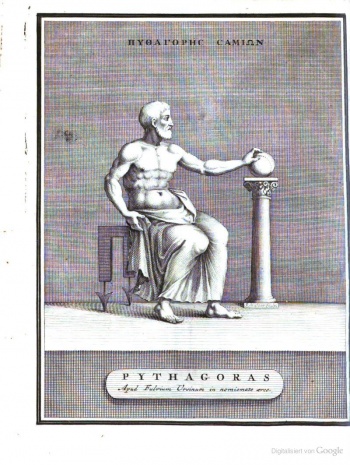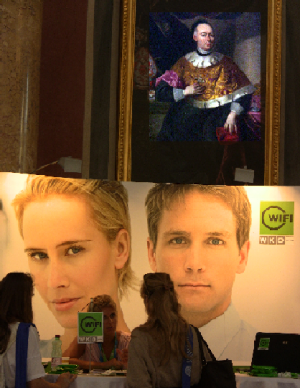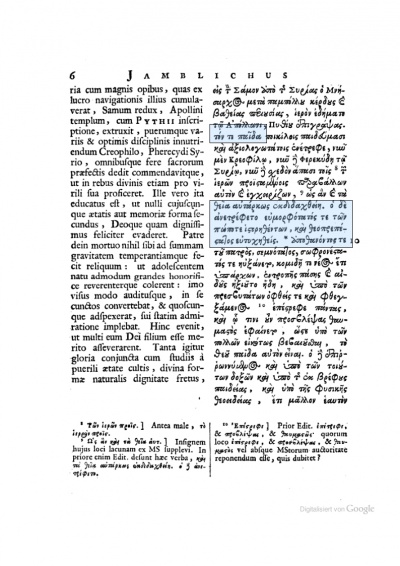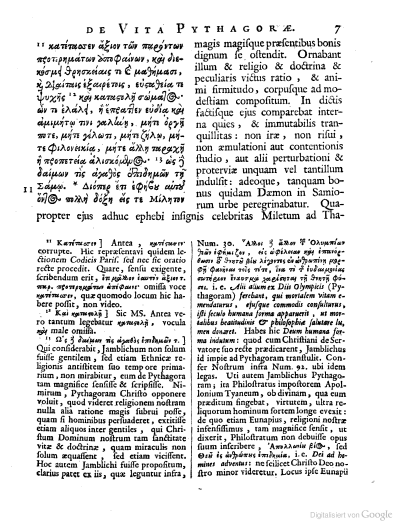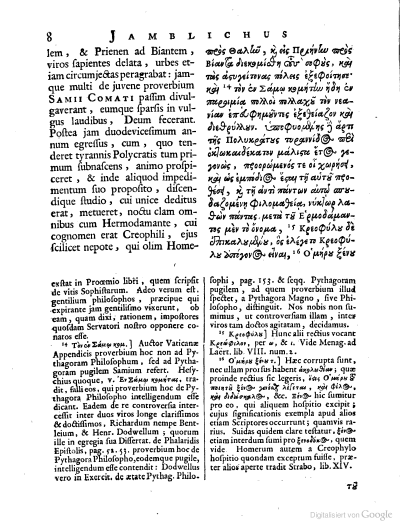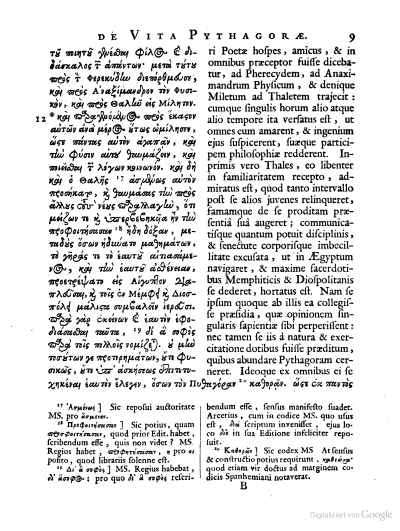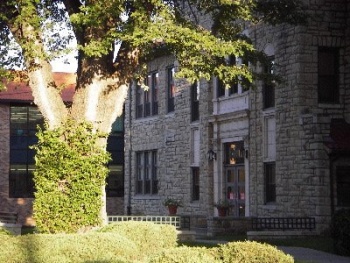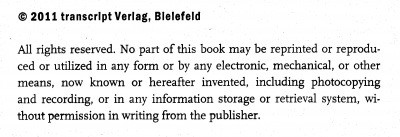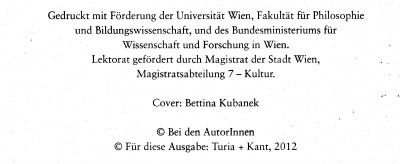Gelehrsamkeit, Bildung und freier Austausch (tphff): Unterschied zwischen den Versionen
K (→Einige Orientierungspunkte: link) |
Anna (Diskussion | Beiträge) K (links) |
||
| (10 dazwischenliegende Versionen von 2 Benutzern werden nicht angezeigt) | |||
| Zeile 56: | Zeile 56: | ||
[[Bild:vural.JPG|500px|center]] | [[Bild:vural.JPG|500px|center]] | ||
| + | |||
| + | '''[http://phaidon.philo.at/~plum/villa/?p=167 im Trend]''' | ||
| + | |||
| + | [[Bild:a-trend-p1.jpg|center]] | ||
=== [[A8501997#Was heißt freie Bildung für alle?|Peter Oberhofer: Was heißt freie Bildung für alle?]] === | === [[A8501997#Was heißt freie Bildung für alle?|Peter Oberhofer: Was heißt freie Bildung für alle?]] === | ||
| + | |||
| + | |||
... | ... | ||
| Zeile 101: | Zeile 107: | ||
===[http://www.monbiot.com/2011/08/29/the-lairds-of-learning/ The Lairds of Learning, by George Monbiot. Published in the Guardian 30th August 2011]=== | ===[http://www.monbiot.com/2011/08/29/the-lairds-of-learning/ The Lairds of Learning, by George Monbiot. Published in the Guardian 30th August 2011]=== | ||
| − | |||
| − | |||
| − | |||
| − | |||
| − | |||
| − | |||
| − | |||
| − | |||
| − | |||
| − | |||
| − | |||
| − | |||
| − | |||
| − | |||
| − | |||
| − | |||
| − | |||
| − | |||
| − | |||
| − | |||
| − | |||
| − | |||
| − | |||
| − | |||
| − | |||
| − | |||
| − | |||
| − | |||
| − | |||
| − | |||
| − | |||
| − | |||
| − | |||
| − | |||
| − | |||
| − | |||
| − | |||
| − | |||
| − | |||
| − | |||
| − | |||
| − | |||
| − | |||
| − | |||
| − | |||
| − | |||
| − | |||
| − | |||
| − | |||
| − | |||
| − | |||
| − | |||
| − | |||
| − | |||
| − | |||
| − | |||
| − | |||
| − | |||
| − | |||
| − | |||
| − | |||
| − | |||
| − | |||
| − | |||
| − | |||
| − | |||
| − | |||
| − | |||
| − | |||
| − | |||
| − | |||
| − | |||
| − | |||
| − | |||
| − | |||
| − | |||
| − | |||
| − | |||
| − | |||
| − | |||
| − | ---- | + | === [http://crl.acrl.org/content/early/2011/09/21/crl-299.full.pdf+html David W. Lewis: The Inevitability of Open Access] === |
| + | |||
| + | * Gold Open Access | ||
| + | ** Delayed | ||
| + | ** Hybrid | ||
| + | * Green Open Access | ||
| + | |||
| + | As we assess how open access and subscription-based journals will fare in the future, it is important to understand that journals compete in two different markets. The first is the market for readers’, or their libraries’, dollars. The second, and ultimately more important, market is for the right to publish the best scholarly works. | ||
| + | |||
| + | One interesting aspect of this market (i.e. best works h.h.) is that <font color="purple">authors do not exchange their work for money; rather they trade it for prestige, a much less tangible commodity</font>. Enhancements in prestige then make it possible for authors to earn tenure and promotion, or compete for grants or better jobs. Because it takes time for a journal to establish a reputation, today most high prestige journals are subscription-based. Authors wishing to enhance their reputations often feel compelled to publish in these established, highly thought of venues, and, especially before tenure, are unwilling to risk exploring other alternatives. Established scholars have generally been successful with subscription journals and often feel no need to change their publishing choices. Currently inertia favors subscription journals. | ||
| + | |||
| + | The open access argument is that over time the advantage of openness with lead to an advantage in prestige. Whether or not open access actually leads to more prestige is a matter of debate. Nearly all studies show that open access leads to more downloads, but the case for a citation advantage, which is the accepted proxy for prestige, is less clear. | ||
| + | |||
| + | The principled case for open access is based on the observation that many subscription journal publishers, particularly for-profit publishers, have used their position as monopoly providers to charge excessive prices, and that these pricing | ||
| + | policies are at odds with the interests of scholars and their universities. | ||
| + | |||
| + | Clayton Christensen in his many books and articles has developed a rich theory of disruption. <font color="purple">When established firms confront disruptive innovations they nearly always fail to adapt and are often forced out of business</font>. However, for customers, disruptive innovation is the mechanism that brings products and services that had previously been available only to those with special skills or the ability to pay high prices. Disruptive innovation is the mechanism that makes products cheaper and easier to use. | ||
| + | |||
| + | :Stahlproduktion, Autoindustrie, Computer | ||
| + | |||
| + | Even though they start this way disruptive innovations generally have two distinct characteristics. First, they bring a new value proposition to the market. This new value proposition is almost always <font color="purple">the application of a new technology using a new business model</font>. Second, disruptive innovations usually make it possible for customers who had not been able to access a service or product to acquire it. The fact that the disruptive innovation is inferior does not matter to these new customers as it is better than what they had before, which was nothing. Over time the disruptive innovation improves and becomes suitable for some of the less demanding customers of the established product. The new technology and business model embedded in the disruptive innovation provides a cost advantage that draws these customers from the established product to the disruptive one and the established firm loses market share. As time goes on the disruptive innovation gets better and better and eventually it attracts more and more customers and comes to dominate the | ||
| + | market. | ||
| + | |||
| + | One might expect established firms to be able to react to disruptive innovation. They are after all leaders in their industries and they did not achieve this position by accident. But as Christensen documents this rarely happens. Established firms have succeeded because they have established successful business models and values that reinforce these models. It turns out that business models and organizational values don’t change easily, and it is thus nearly impossible for established firms to quickly adjust so as to take advantage of new technologies in disruptive ways. Established firms often see the new technologies and their potential advantages, but their reaction is to attempt to cram the new technology into their existing business models. They are unwilling to use the technology in the inferior applications that it is initially suited for. This is largely because their current customers cannot use the inferior product and it cannot be sold at margins that the established firm’s business model requires. | ||
| + | |||
| + | <font color="purple">Gold OA has all of the attributes of a disruptive innovation. It combines a new technology, digital distribution of content using the Internet, with a new business model, free distribution to the reader with cost paid by the author or through other means.</font> | ||
| + | |||
| + | If, as I have argued, Gold OA is a disruptive innovation then we need to think differently about how it is likely to progress in the marketplace. Christensen argues that the substitution of the disruptive innovation for the established | ||
| + | product does not follow a linear pattern. Rather, the substitution pattern is almost always an S-curve. The temptation is to project from the flat bottom part of the S-curve, as I did in earlier in this paper, and assume that the innovation will not be important any time soon. The problem is to predict when the curve will flip and the pace of adoption of the disruptive innovation will accelerate rapidly. This is hard to do when the disruptive innovation has only a small share of the market. To take one of Christensen’s examples, digital photography spent a decade incubating on the flat part of the S-curve and then in a few short years replaced nearly all film-based photography. But because there was so little market penetration early on, it was hard to see the change coming. | ||
=== Einige Orientierungspunkte === | === Einige Orientierungspunkte === | ||
| Zeile 189: | Zeile 143: | ||
[[Bild:copy1.JPG|400px]] [[Bild:copy2.JPG|400px]] | [[Bild:copy1.JPG|400px]] [[Bild:copy2.JPG|400px]] | ||
</div> | </div> | ||
| + | |||
| + | [http://www.wittgensteinchronology.com/index.html John Foster: Wittgenstein Tag für Tag] | ||
| − | [https://freedom-to-tinker.com/blog/appel/open-access-scholarly-publications-princeton Open Access to Scholarly Publications at Princeton] | [http://blogs.library.duke.edu/scholcomm/2011/09/30/really-what-has-princeton-done/ Really, what has Princeton done] | + | [https://freedom-to-tinker.com/blog/appel/open-access-scholarly-publications-princeton Open Access to Scholarly Publications at Princeton] | [http://blogs.library.duke.edu/scholcomm/2011/09/30/really-what-has-princeton-done/ Really, what has Princeton done] | [http://blogs.lse.ac.uk/impactofsocialsciences/2011/10/10/open-access-ripositories/ Open access repositories ...] |
| − | [http://openaccess.univie.ac.at/ OA Universität Wien] | [http://www.boku.ac.at/open-access.html OA Bodenkultur Wien] | [http://www.ifla.org/en/news/just-released-ifla-statement-on-open-access International Federation of Library Associations and Institutions] | + | [http://openaccess.univie.ac.at/ OA Universität Wien] | [http://www.boku.ac.at/open-access.html OA Bodenkultur Wien] | [http://www.ifla.org/en/news/just-released-ifla-statement-on-open-access International Federation of Library Associations and Institutions] | [http://www.peerproject.eu/home/ Publishing and the Ecology of European Research] | [http://oad.simmons.edu/oadwiki/Main_Page Open Access Directory] |
[http://www.infotoday.com/it/jul11/Suber-Leader-of-a-Leaderless-Revolution.shtml Richard Poynder, “Suber: Leader of a Leaderless Revolution,”] | [http://www.plosone.org/article/info%3Adoi%2F10.1371%2Fjournal.pone.0020961 Mikael Laakso et.al. The Development of Open Access Journal Publishing] | [http://chronicle.com/article/Whats-at-Stake-in-the-Georgia/127718/ Georgia State Copyright Case] | [http://www.infotoday.com/it/jul11/Suber-Leader-of-a-Leaderless-Revolution.shtml Richard Poynder, “Suber: Leader of a Leaderless Revolution,”] | [http://www.plosone.org/article/info%3Adoi%2F10.1371%2Fjournal.pone.0020961 Mikael Laakso et.al. The Development of Open Access Journal Publishing] | [http://chronicle.com/article/Whats-at-Stake-in-the-Georgia/127718/ Georgia State Copyright Case] | ||
:"Laakso, et. al. estimate that in 1993 there were 20 open access journals that published 247 articles. By 2000 they estimate there were 741 journals that published 35,519 articles. The figures for 2005 were 90,720 articles in 2,837 journals and for 2009 191,851 articles in 4,767 journals. In terms of articles this represents a 155.4% increase between 2000 and 2005. Between 2005 and 2009 there was a 111.5% increase. They estimate that the 2009 figure for articles represents 7.7% of the scholarly articles published in that year." (David Lewis) | :"Laakso, et. al. estimate that in 1993 there were 20 open access journals that published 247 articles. By 2000 they estimate there were 741 journals that published 35,519 articles. The figures for 2005 were 90,720 articles in 2,837 journals and for 2009 191,851 articles in 4,767 journals. In terms of articles this represents a 155.4% increase between 2000 and 2005. Between 2005 and 2009 there was a 111.5% increase. They estimate that the 2009 figure for articles represents 7.7% of the scholarly articles published in that year." (David Lewis) | ||
| + | |||
| + | === [[SGML, HTML, XML (tphff)]] === | ||
=== [http://sammelpunkt.philo.at Sammelpunkt. Elektronisch archivierte Theorie] === | === [http://sammelpunkt.philo.at Sammelpunkt. Elektronisch archivierte Theorie] === | ||
Aktuelle Version vom 27. Oktober 2011, 06:52 Uhr
Inhaltsverzeichnis
- 1 Freier Forschungsaustausch, antik
- 2 Bildung für alle
- 3 Freier Forschungszugang, aktuell
- 3.1 The Lairds of Learning, by George Monbiot. Published in the Guardian 30th August 2011
- 3.2 David W. Lewis: The Inevitability of Open Access
- 3.3 Einige Orientierungspunkte
- 3.4 SGML, HTML, XML (tphff)
- 3.5 Sammelpunkt. Elektronisch archivierte Theorie
- 3.6 Kollektion. Metadaten philosophischer Arbeiten in OAI-konformen elektronischen Archiven
Freier Forschungsaustausch, antik
Iamblichus of Syrian Chalcis's. Life of Pythagoras
Aus Kapitel 2: Jugend, Erziehung, Reisen
- After Mnesarchus had returned from Syria to Samos, with great wealth derived from a favorable seavoyage, he built a temple to Apollo, with the inscription of Pythius. He took care that his son should enjoy the best possible education, studying under Creophilus, then under Phorecydos the Syrian, and then under almost all who presided over sacred concerns, to whom he especially recommended his son, that he might be as expert as possible in divinity. Thus by education and good fortune he became the most beautiful and godlike of all those who have been celebrated in the annals of history.
- After his father's death, though he was still but a youth, his aspect was so venerable, and his habits so temperate that he was honored and even reverenced by elderly men, attracting the attention of all who saw and heard him speak, creating the most profound impression. That is the reason that many plausibly asserted that he was a child of the divinity. Enjoying the privilege of such a renown, of an education so thorough from infancy, and of so impressive a natural appearance he showed that he deserved all these advantages by deserving them, by the adornment of piety and discipline, by exquisite habits, by firmness of soul, and by a body duly subjected to the mandates of reason. An inimitable quiet and serenity marked all his words and actions, soaring above all laughter, emulation, contention, or any other irregularity or eccentricity; his influence at Samos was that of some beneficent divinity. His great renown, while yet a youth, reached not only men as illustrious for their wisdom as Thales at Miletus, and Bias at Prione, but also extended to the neighboring cities. He was celebrated everywhere as the "long-haired Samian," and by the multitude was given credit for being under divine inspiration.
- When he had attained his eighteenth year, there arose the tyranny of Policrates; and Pythagoras foresaw that under such a government his studies might be impeded, as they engrossed the whole of his attention. So by night he privately departed with one Hermodamas, - who was surnamed Creophilus, and was the grandson of the host, friend and general preceptor of the poet Homer, - going to Phorecydes, to Anaximander the natural philosopher, and to Thales at Miletu. He successively associated with each of those philosophers in a manner such that they all loved him, admired his natural endowments, and admitted him to the best of their doctrines, Thales especially, on gladly admitting him to the intimacies of his confidence, admired the great difference between him and other young men, who were in every accomplishment surpassed by Pythagoras. After increasing the reputation Pythagoras had already acquired, by communicating to him the utmost he was able to impart to him, Thales, laying stress on his advanced age and the infirmities of his body, advised him to go to Egypt, to get in touch with the priests of Memphis and Jupiter. Thales confessed that the instruction of these priests was the source of his own reputation for wisdom, while neither his own endowments nor achievements equaled those which were so evident in Pythagoras. Thales insisted that, in view of all this, if Pythagoras should study with those priests, he was certain of becoming the wisest and most divine of men.
Marcel Hénaff: Der Preis der Wahrheit S. 580
- Beim Wissen des Lehrers ehrt man etwas, von dem der Lehrer lediglich der Träger oder der Vermittler ist. Erwiderung durch eine Gabe für eine bereits erhaltene Gabe. Doch von welchem Geber kommt sie? Das sagt Aristoteles nicht. Jedermann weiß es: aus einer göttlichen Quelle. ... Es handelt sich um eine immaterielle Gabe, um eine Gunst, die zunächst Dankbarkeit erheischt, deren Ausdruck die materielle Gabe lediglich ist. Die großzügige Geste, die den Lehrer der Weisheit ehrt (honoriert), zielt auf Höheres als ihn.
Bildung für alle
Kapitel 6 aus Dissoi Logoi. Zweierlei Ansichten: Ein sophistischer Traktat
- 1) Es wird eine Rede geführt, die weder wahr noch neu ist, nämlich die, daß Weisheit und Tüchtigkeit weder lehrbar noch erlernbar seien. Die Vertreter dieser Auffassung bedienen sich folgender Beweise: (2) Daß es unmöglich sei, etwas selbst noch zu besitzen, wenn man es einem anderen übergeben hat. Dies ist ein Beweis. (3) Ein anderer lautet, daß, wenn Weisheit und Tugend lehrbar wären, es anerkannte Lehrer dafür gäbe, wie es solche der Musik gibt. (4) Ein dritter, daß die weisen Männer von Hellas dann ihren Kindern und Freunden die Weisheit gelehrt hätten. (5) Ein vierter, daß schon manche, die bei Sophisten in die Lehre gingen, keinen Nutzen daraus zogen. (6) Ein fünfter, daß aus vielen, die keinen Umgang mit Sophisten hatten, respektable Leute geworden sind.
- (7) Ich persönlich halte diese Argumentation für äußerst einfältig. Denn ich sehe die Lehrer das Lesen und Schreiben lehren, das sie zugleich auch selbst beherrschen, und die Lautisten das Lautenspiel. Und zum zweiten Beweis, nämlich daß es keine anerkannten Lehrer gebe: Was lehren die Sophisten denn anderes als Weisheit und Tüchtigkeit? (8) Und was waren denn die Anaxagoreer und Pythagoreer? Und zum dritten: Polyklet hat seinen Sohn gelehrt, Statuen zu machen.
- (9) Sollte auch einer seine Weisheit nicht lehren können, so beweist das nichts; wenn aber nur einer sie gelehrt hat, so ist das ein Beleg dafür, daß es möglich ist, sie zu lehren. (10) Das vierte Argument (ist nur stichhaltig), wenn diejenigen, die bei den weisen Sophisten in die Lehre gehen, nicht weise werden. Es haben ja auch viele das Lesen und Schreiben nicht gelernt, obwohl sie es lernten. (11) Es gibt auch eine natürliche Begabung, durch die jemand sich eine Fähigkeit erwirbt, ohne bei den Sophisten in die Lehre zu gehen, eben weil er die guten Anlagen dazu hat, das meiste schnell und leicht zu begreifen, nachdem er nur weniges gelernt hat bei denen, bei denen wir auch die Wörter lernen; und mehr oder weniger von diesen lernt der eine vom Vater, der andere von der Mutter.
- Wer aber nicht glauben will, daß wir die Wörter lernen, sondern meint, daß wir sie von Geburt an beherrschen, der soll sich aus folgendem ein Urteil bilden: Brächte jemand ein neugeborenes Kind zu den Persern und ließe es dort aufziehen, ohne daß es die griechische Sprache zu hören bekäme, dann würde es persisch sprechen. (12) Brächte jemand eines von dort hierher, so würde es griechisch sprechen. So lernen wir die Wörter und kennen unsere Lehrer nicht.
- Hiermit sind meine Gründe dargelegt, und du hast ihren Anfang, ihr Ende und ihre Mitte. Ich behaupte nicht, daß Weisheit und Tüchtigkeit lehrbar sind, aber die genannten Beweise genügen mir nicht.
Frankfurter Allgemeine Sonntagszeitung 2.Oktober 2011. S. 35
Peter Oberhofer: Was heißt freie Bildung für alle?
...
- Die grundlegende Forderung der universitären Protestbewegung zielt auf freie Bildung statt Ausbildung („freie Bildung für alle“). Die in den Forderungen vielfach verwendeten Kernwörter („frei“, „Bildung“, „demokratisch“) sind aber mehrdeutig.
- „Freiheit“ kann im Rahmen der Studienbedingungen heißen: Die Bildungsprozesse, die in der Gemeinschaft von Lehrenden und Studierenden in Gang kommen, sollen frei sein von allen Zwängen, die nicht aus dem spezifischen wissenschaftlichen Ethos des jeweiligen Faches stammen.
...
- Die andere Freiheit besteht darin, als Individuum zu einem selbst gewählten Studium Zugang zu erhalten und innerhalb dieses Studienfaches die Lehrveranstaltungen nach eigenen Interessen auszuwählen. Die universitären Bildungsprozesse sollen „allen“ zugänglich sein, und sie sollen in der Verantwortung des studierenden Individuums liegen, statt in Form eines Curriculums, das die Bildungsprozesse in Form von modularisierten „Lehr- und Lerninhalten“ vorgibt, festgelegt zu sein.
...
- Die einen sehen die Universität als Übergangsort, der nach eigenen Gesetzen (des wissenschaftliches Ethos) funktioniert und gebildete, kompetente gesellschaftliche Akteure aus sich entlassen soll; Protest ist in dieser Sicht immer dann nötig, wenn die inneren Gesetze des wissenschaftlichen Ethos gefährdet sind. Im Gegensatz dazu verstehen die Protestierenden die gesellschaftliche Rolle der Universität direkter. Sie sehen die Universität weniger als Übergangsort, sondern als Lebensraum, als vollständige Welt im Kleinen, in der nicht nur auf die nachuniversitäre gesellschaftliche Rolle hingelebt, sondern eine (andere) Gesellschaftlichkeit vorgelebt wird.
...
- Es lohnt aber, darauf aufmerksam zu werden, dass es zwischen der Idee von Freiheit und Bildung, die diese Auffassung der gesellschaftlichen Rolle der Universität beinhaltet, und der eingangs erwähnten akademischen Freiheit keine naturgegebene Harmonie, sondern im Gegenteil massive Konflikte gibt.
...
- Wer der akademischen Freiheit den Vorrang einräumt, müsste es wohl so sehen: Nur wer fähig ist, sich den inneren Gesetzen des wissenschaftlichen Ethos seines Studienfaches zu unterwerfen, sollte auch das Recht haben, dieses bestimmte Fach zu studieren (deshalb „Studieneingangsphasen“)
- Für den Verfechter der „totalen“ Freiheit scheint die gesamtgesellschaftliche Legitimation des Studierens so selbstverständlich zu sein, dass er in der Investition des knappen Gutes Geld prinzipiell keine Grenzen kennt
"Die sogenannte Demokratie an den Instituten"
Bildung - Philosophie - Bologna (bpb)
Ein Spagat zwischen Abstoßung und Auftrag ist der Gestus aufgeklärter Emanzipation, die Bewegung der selbstverantworteten Menschwerdung, deren Verlauf in der kritischen Auseinandersetzung mit Überlieferungen beginnt und – vermittelt durch suggestive Wertprojektionen – in der Identifikation mit einem Wissens- und Verhaltenskodex endet, der das Tagesgeschäft einer Gesellschaft als identitätsstiftende Sphäre umhüllt. Viele schöne Worte sind über die Befähigung zur vernünftigen Selbstbestimmung gesagt worden.
Was wird aus dem Bildungsideal? Wir sollten es in eine Gruppe mit anderen Idealen, wie „gesunde Ernährung“, „geschützte Privatsphäre“ oder „intakte Umwelt“ sehen. Eine gebildete Lebensweise zählt zu den Privilegien, welche in einer konsumorientierten Massendemokratie überall begehrt sind und sich dadurch aufzulösen beginnen. Zu viele hätten gern ein Seegrundstück. Der Vergleich zeigt den dominanten gesellschaftlichen Verteilungsmechanismus, nämlich das monetäre System. Wenn das Dilemma am Bildungssektor nicht über Geldmittel gelöst werden soll, sind neue Denkansätze nötig. Die alte Villa am Strand ist unvergleichlich, eine sozial gerechte Raumplanung kann zwar ihre Noblesse nicht ersetzen, aber eine Erinnerung an die vergangene Ordnung bewahren. Humanistische Bildung ist nicht multiplizierbar. Sie ist Merkmal einer auf unserem Kontinent entstandene Lebenskunst.
Freier Forschungszugang, aktuell
The Lairds of Learning, by George Monbiot. Published in the Guardian 30th August 2011
David W. Lewis: The Inevitability of Open Access
- Gold Open Access
- Delayed
- Hybrid
- Green Open Access
As we assess how open access and subscription-based journals will fare in the future, it is important to understand that journals compete in two different markets. The first is the market for readers’, or their libraries’, dollars. The second, and ultimately more important, market is for the right to publish the best scholarly works.
One interesting aspect of this market (i.e. best works h.h.) is that authors do not exchange their work for money; rather they trade it for prestige, a much less tangible commodity. Enhancements in prestige then make it possible for authors to earn tenure and promotion, or compete for grants or better jobs. Because it takes time for a journal to establish a reputation, today most high prestige journals are subscription-based. Authors wishing to enhance their reputations often feel compelled to publish in these established, highly thought of venues, and, especially before tenure, are unwilling to risk exploring other alternatives. Established scholars have generally been successful with subscription journals and often feel no need to change their publishing choices. Currently inertia favors subscription journals.
The open access argument is that over time the advantage of openness with lead to an advantage in prestige. Whether or not open access actually leads to more prestige is a matter of debate. Nearly all studies show that open access leads to more downloads, but the case for a citation advantage, which is the accepted proxy for prestige, is less clear.
The principled case for open access is based on the observation that many subscription journal publishers, particularly for-profit publishers, have used their position as monopoly providers to charge excessive prices, and that these pricing policies are at odds with the interests of scholars and their universities.
Clayton Christensen in his many books and articles has developed a rich theory of disruption. When established firms confront disruptive innovations they nearly always fail to adapt and are often forced out of business. However, for customers, disruptive innovation is the mechanism that brings products and services that had previously been available only to those with special skills or the ability to pay high prices. Disruptive innovation is the mechanism that makes products cheaper and easier to use.
- Stahlproduktion, Autoindustrie, Computer
Even though they start this way disruptive innovations generally have two distinct characteristics. First, they bring a new value proposition to the market. This new value proposition is almost always the application of a new technology using a new business model. Second, disruptive innovations usually make it possible for customers who had not been able to access a service or product to acquire it. The fact that the disruptive innovation is inferior does not matter to these new customers as it is better than what they had before, which was nothing. Over time the disruptive innovation improves and becomes suitable for some of the less demanding customers of the established product. The new technology and business model embedded in the disruptive innovation provides a cost advantage that draws these customers from the established product to the disruptive one and the established firm loses market share. As time goes on the disruptive innovation gets better and better and eventually it attracts more and more customers and comes to dominate the market.
One might expect established firms to be able to react to disruptive innovation. They are after all leaders in their industries and they did not achieve this position by accident. But as Christensen documents this rarely happens. Established firms have succeeded because they have established successful business models and values that reinforce these models. It turns out that business models and organizational values don’t change easily, and it is thus nearly impossible for established firms to quickly adjust so as to take advantage of new technologies in disruptive ways. Established firms often see the new technologies and their potential advantages, but their reaction is to attempt to cram the new technology into their existing business models. They are unwilling to use the technology in the inferior applications that it is initially suited for. This is largely because their current customers cannot use the inferior product and it cannot be sold at margins that the established firm’s business model requires.
Gold OA has all of the attributes of a disruptive innovation. It combines a new technology, digital distribution of content using the Internet, with a new business model, free distribution to the reader with cost paid by the author or through other means.
If, as I have argued, Gold OA is a disruptive innovation then we need to think differently about how it is likely to progress in the marketplace. Christensen argues that the substitution of the disruptive innovation for the established product does not follow a linear pattern. Rather, the substitution pattern is almost always an S-curve. The temptation is to project from the flat bottom part of the S-curve, as I did in earlier in this paper, and assume that the innovation will not be important any time soon. The problem is to predict when the curve will flip and the pace of adoption of the disruptive innovation will accelerate rapidly. This is hard to do when the disruptive innovation has only a small share of the market. To take one of Christensen’s examples, digital photography spent a decade incubating on the flat part of the S-curve and then in a few short years replaced nearly all film-based photography. But because there was so little market penetration early on, it was hard to see the change coming.
Einige Orientierungspunkte
John Foster: Wittgenstein Tag für Tag
Open Access to Scholarly Publications at Princeton | Really, what has Princeton done | Open access repositories ...
OA Universität Wien | OA Bodenkultur Wien | International Federation of Library Associations and Institutions | Publishing and the Ecology of European Research | Open Access Directory
Richard Poynder, “Suber: Leader of a Leaderless Revolution,” | Mikael Laakso et.al. The Development of Open Access Journal Publishing | Georgia State Copyright Case
- "Laakso, et. al. estimate that in 1993 there were 20 open access journals that published 247 articles. By 2000 they estimate there were 741 journals that published 35,519 articles. The figures for 2005 were 90,720 articles in 2,837 journals and for 2009 191,851 articles in 4,767 journals. In terms of articles this represents a 155.4% increase between 2000 and 2005. Between 2005 and 2009 there was a 111.5% increase. They estimate that the 2009 figure for articles represents 7.7% of the scholarly articles published in that year." (David Lewis)
